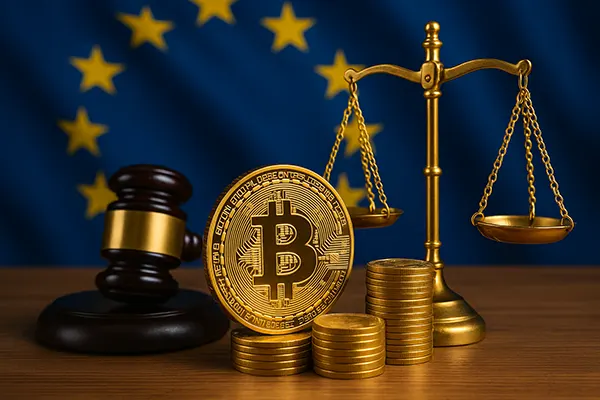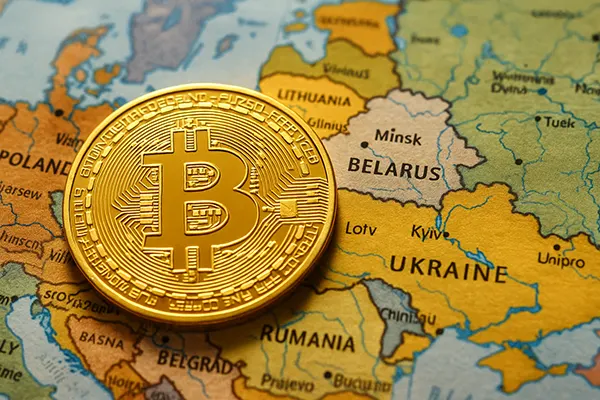
Regulation of Cryptocurrencies in Europe in 2025: New Directives and Their Impact
The European cryptocurrency landscape in 2025 is undergoing a significant transformation. Driven by the need to enhance transparency, prevent money laundering, and protect investors, the European Union has implemented a series of regulatory measures that reshape the way digital assets are traded, stored, and taxed. These updates aim to bring stability to the market while encouraging innovation within a clearly defined legal framework.
New European Directives and Their Core Objectives
In 2025, the European Union introduced a new wave of regulations built upon the foundations of the Markets in Crypto-Assets (MiCA) framework. The key goal is to create a unified standard for digital asset operations across all EU member states. This means that cryptocurrency service providers are now required to obtain licences and adhere to strict compliance rules related to capital reserves, security measures, and consumer protection.
One of the major updates involves the mandatory registration of crypto exchanges and wallet providers under the European Securities and Markets Authority (ESMA). This move allows for improved oversight and enhances accountability, particularly in the area of cross-border transactions. The regulation also requires companies to disclose clear information about asset risks and provide transparent fee structures.
Additionally, anti-money laundering (AML) measures have been expanded. The “Travel Rule”, now fully integrated into European law, obliges service providers to share customer information with financial authorities when transferring crypto funds above a specific threshold. This ensures greater traceability and reduces the risk of illegal financial activities linked to digital currencies.
Impact on Market Participants and Businesses
For businesses, the implementation of MiCA and related directives has increased operational costs, but it also brought a more stable business environment. Start-ups and established exchanges alike now have clearer rules to follow, which reduces uncertainty and supports fair competition. While smaller players may find it challenging to comply, the overall confidence in the market has grown significantly.
Investors benefit from the new regulations through enhanced security and legal recourse. Clearer standards for stablecoins, token issuers, and crypto custodians ensure that consumers are better protected from fraud and market manipulation. Moreover, the establishment of harmonised tax reporting rules simplifies the process for individuals and companies trading across multiple EU jurisdictions.
At the same time, these regulatory shifts promote cooperation between traditional financial institutions and blockchain-based companies. Banks are increasingly open to offering crypto-related services, such as custody or investment products, now that the legal environment provides clear boundaries and requirements.
Taxation and Transparency in the Digital Economy
Taxation remains one of the most dynamic aspects of cryptocurrency regulation in Europe. In 2025, the European Commission reinforced the DAC8 directive, which focuses on improving tax transparency across all EU countries. This update obliges crypto platforms to automatically report users’ transactions to national tax authorities, minimising opportunities for tax evasion and ensuring fair contribution to state budgets.
The DAC8 directive also harmonises definitions of digital assets and reporting procedures. This change helps unify tax practices between member states, reducing administrative burdens and preventing double taxation. Importantly, it encourages individuals and businesses to operate within the legal system, strengthening the legitimacy of cryptocurrency as part of the wider financial ecosystem.
Furthermore, the EU’s focus on blockchain transparency extends to the fight against illicit activities. Enhanced monitoring tools allow authorities to trace transactions and identify suspicious behaviour while respecting users’ privacy. This balance between oversight and innovation is crucial to maintaining public trust in decentralised technologies.
The Role of National Authorities and Financial Supervisors
Each EU member state retains a degree of autonomy in how they apply the overarching MiCA principles. National regulators work closely with ESMA to ensure consistent implementation while adapting specific measures to local markets. Countries like Germany, France, and the Netherlands have already strengthened their supervisory frameworks to align with European standards.
Central banks also play a vital role in maintaining stability within the crypto sector. They oversee the issuance of stablecoins pegged to fiat currencies and ensure that reserves are adequately backed. This supervision prevents potential market disruptions and fosters confidence among both institutional and retail investors.
To further enhance regulatory efficiency, cooperation between EU countries has intensified. The creation of joint task forces and information-sharing systems enables faster responses to emerging threats, such as cybercrime or fraud involving decentralised finance (DeFi) platforms.

Future Outlook: Towards a Balanced and Secure Crypto Ecosystem
Looking ahead, the European Union is focusing on balancing innovation with consumer protection. Policymakers are developing frameworks for decentralised finance, non-fungible tokens (NFTs), and tokenised assets to ensure they fall under transparent and fair regulations. These measures are expected to foster innovation while preventing the creation of unregulated grey zones in the market.
Europe’s stance on sustainability is also shaping crypto policy. The new Green Digital Finance initiative encourages blockchain companies to adopt energy-efficient technologies and report their environmental impact. This approach aligns with the EU’s broader climate objectives and highlights the importance of responsible technological growth.
Finally, collaboration with international regulators remains key. The EU continues to work with the Financial Action Task Force (FATF) and other global bodies to develop harmonised standards for digital asset regulation. By 2025, Europe has become a leading region in establishing comprehensive crypto legislation that supports both economic stability and technological progress.
Conclusion: A New Era of Responsible Crypto Regulation
In 2025, Europe’s cryptocurrency market is entering a new phase of maturity. The combination of MiCA, DAC8, and AML directives has created a transparent and structured environment where innovation and investor protection can coexist. These efforts mark a turning point in how digital assets are perceived — not as speculative tools, but as integral components of the modern economy.
For businesses, this means operating within a predictable legal framework that fosters growth while maintaining accountability. For investors, it ensures that their funds are safeguarded by laws comparable to those governing traditional finance. Ultimately, Europe’s approach sets an international benchmark for responsible, inclusive, and forward-thinking crypto regulation.
The European cryptocurrency sector in 2025 exemplifies how comprehensive policy-making can transform a once-volatile market into a stable and trustworthy part of the global financial system. This evolution not only strengthens investor confidence but also positions Europe at the forefront of digital financial innovation worldwide.
Popular articles
-
 Regulation of Cryptocurrencies in Europe in 2025: New Directives an...
Regulation of Cryptocurrencies in Europe in 2025: New Directives an...The European cryptocurrency landscape in 2025 is undergoing a significant …
-
 Cryptocurrency Regulation in Eastern Europe: A Comparative Analysis
Cryptocurrency Regulation in Eastern Europe: A Comparative AnalysisCryptocurrency has become an integral part of the global financial …
